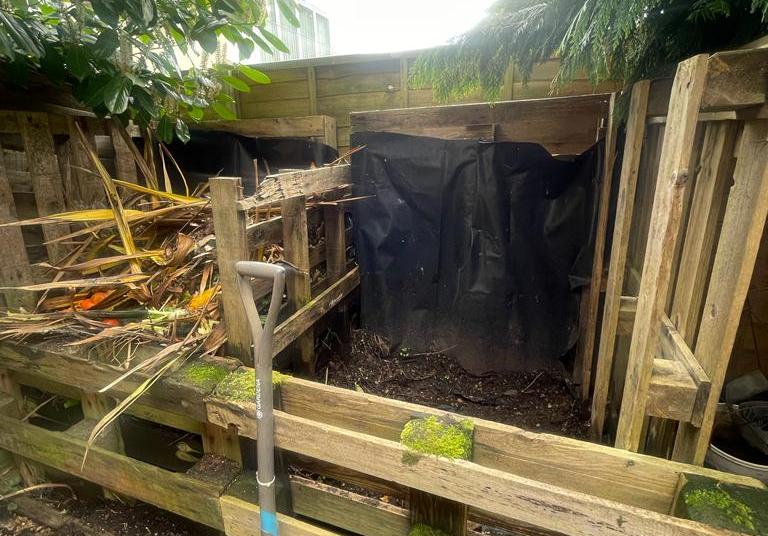
Coffee Grounds: The organic superfood for your fruit and vegetable plants
Don’t let those gorgeous aromatic grounds go to waste!

Yep! If you’re looking for a way to improve your garden’s soil, building a compost heap and composting your waste is an excellent option.
Composting is the process of breaking down organic matter into nutrient-rich soil that can be used to fertilise your garden.
And the best part? You can make your compost heap using old pallets, which can be a great way to upcycle materials that would otherwise go to waste.

Step 1: Choose Your Pallets
To start with, you’ll need to find some pallets that are in good condition. Look for pallets that are sturdy and free from any rot or damage. You can usually find old pallets for free at local businesses, or even at your council recycling centre.
Ideally, you’ll want to use at least four pallets to create your compost heap.
Step 2: Find a Suitable Location
Next, you’ll need to find a suitable location for your compost heap. Choose an area in your garden that is level and has good drainage, but likely at the end of the garden so it’s out of the way. Just make sure the area is easily accessible so you can add to your compost heap regularly.
Step 3: Assemble Your Pallets
Once you have your pallets and your location, it’s time to assemble your compost heap.
Start by standing up your pallets in a square or rectangular shape, with one pallet serving as the back wall and the others forming the sides. You can also use a pallet on the bottom if you wish, but just make sure the front facing side is open to give you access to your compost.
We also lined ours with pond liner. This isn’t essential, but it keeps the compost nice and tidy.
Screwing/ nailing the pallets together is probably your best bet, but if you’re not comfortable with power tools you can use cable ties instead to secure the pallets together.


Step 4: Add Your Compost Materials
Now it’s time to start adding your compost materials to the heap. You can add any organic matter to your compost heap, including kitchen scraps, yard waste, and even shredded newspaper.
You’ll want to aim for a mix of “green” materials (such as fresh grass clippings or fruit and vegetable scraps) and “brown” materials (such as dry leaves or straw). You can also add some soil to help kick-start the composting process.
Step 5: Turn Your Compost Regularly
To help your compost break down more quickly, you’ll want to turn it regularly.
This means using a pitchfork or garden fork to mix the materials together and aerate the heap. You should do this once a week or so, depending on how quickly your compost is breaking down.
Step 6: Harvest Your Compost
After a few months, your compost should be ready to use in your garden. You’ll know it’s ready when it looks and smells like rich, dark soil.
Simply shovel the compost out of your heap and use it to fertilise your plants. Easy!
Creating a compost heap in your garden using old pallets is a great way of reusing everyday waste to get FREE soil.
With a little effort, you can turn your kitchen scraps and yard waste into nutrient-rich soil that will help your fruit and vegetables thrive.
So why not give it a try? Your garden (and the planet) will thank you for it!

Don’t let those gorgeous aromatic grounds go to waste!

Turn kitchen and garden waste into free soil with this simple compost heap build!

Use up excess Radishes with this delicious summery salad.
Please check your Junk folder just in case our confirmation email has found it’s way there.
If so, please mark us as a safe sender/ move to your inbox so you don’t miss out on your free Weekly Growing Guide going forward. Thanks!